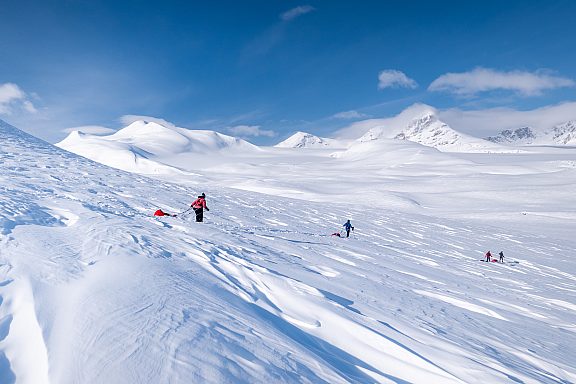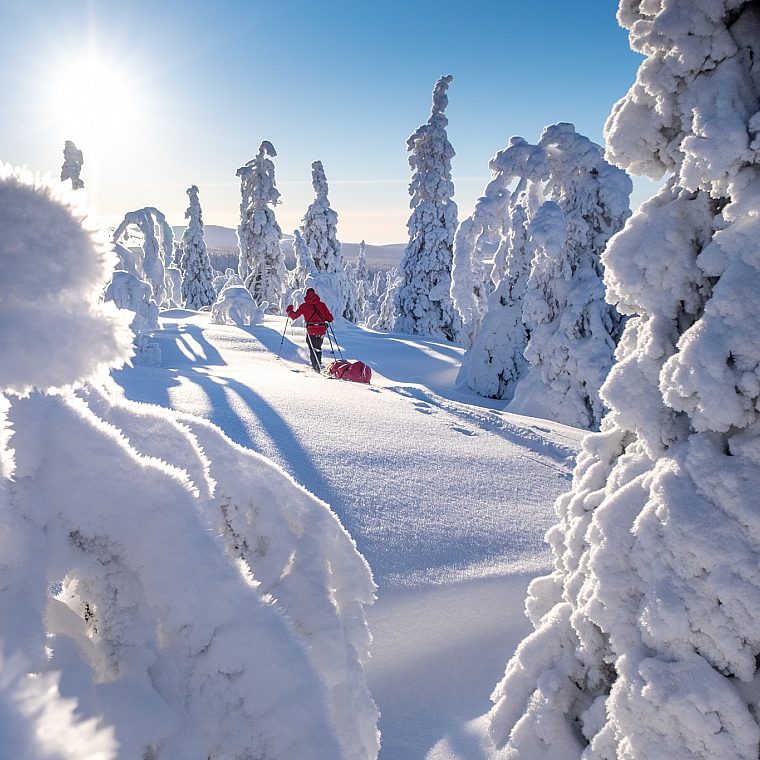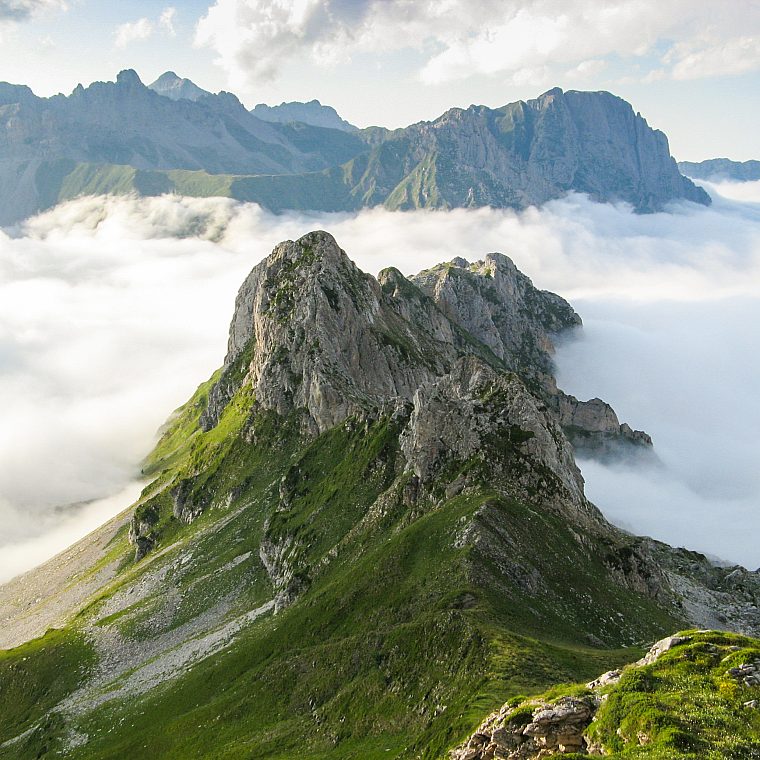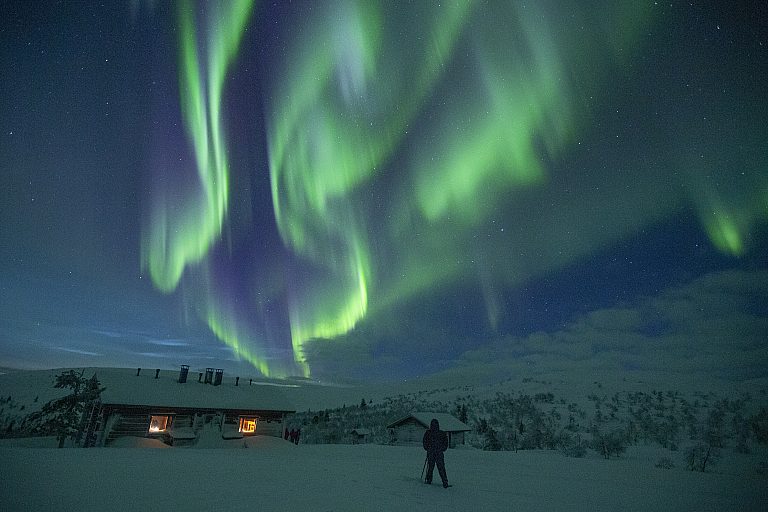
Northern lights
The ultimate dream for many people travelling to the Arctic is to watch the dancing spectacle of wavy colourful light ripple across the frosty night sky. The aurora often starts off as a static white glow, which then brightens into fierce dancing curtains of green and red light. For many, it is the absolute highlight of their expedition.
So when and why does the aurora occur? The earth is continuously bombarded by charged particles (electrons and protons) coming from the sun, the so-called 'solar wind'. Through interaction between this solar wind and the Earth's magnetic field, this stream of charged particles is concentrated in the so-called 'aurora belt'. At high speed, they dive into Earth's atmosphere, where they collide with atmospheric molecules. The force of those impacts can ionize oxygen and nitrogen atoms. When they return to the ground state, energy is released in the form of light. The color of that light depends on the exact atomic process taking place high in the atmosphere. Nitrogen atoms typically emit green colors, and oxygen atoms typically emit red colors.
The intensity of the solar wind is highly variable. During periods of high solar activity, more collisions take place in the atmosphere and the aurora tends to be brighter and much more dynamic, with higher chances of the red and purple colors. When solar activity is low, the aurora is usually rather weak and static and the red color is largely absent.

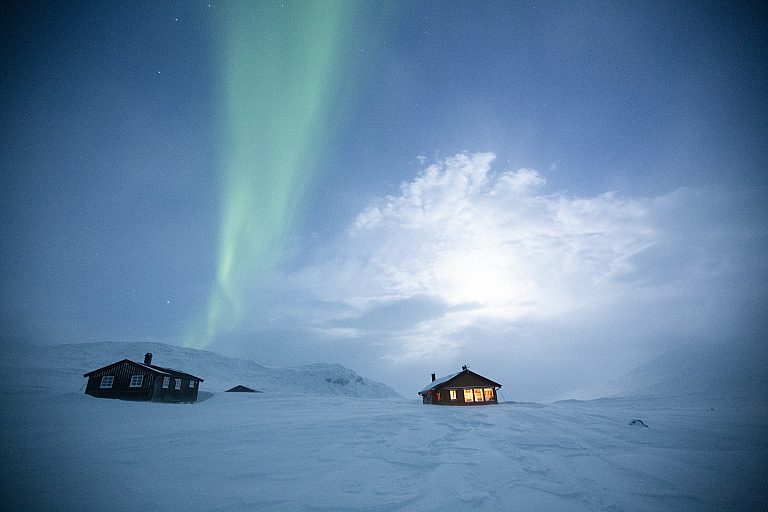
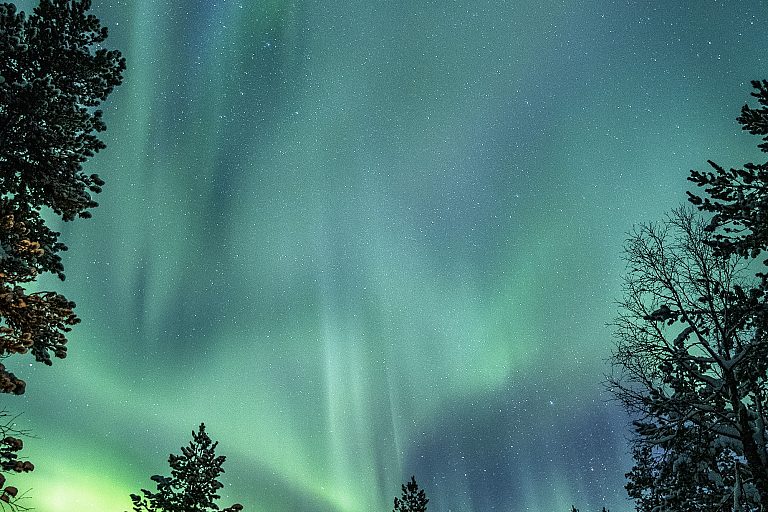
Where can you go to see the aurora?
Because the solar wind is deflected by the Earth's magnetic field, the Northern lights are concentrated in a wide band around the magnetic North Pole known as the aurora belt. Many think the likelihood of seeing the Northern lights increases the further you travel north - but this is not true. Svalbard and North Greenland for example are located north of the belt, however the chances of seeing aurora are considerably smaller, and it will generally appear above the southern horizon!
The ideal locations right below the aurora belt can be found in Lapland at about 68-70°N, in Iceland at about 65-67°N, and in Greenland at 60-62°N. This considerable asymmetry in terms of latitude is due to the fact that the magnetic north pole and the geographic north pole are more than 500km apart, with the North magnetic pole situated on the Canadian side of the (geographic) North Pole.
Autumn, Winter, Spring
Contrary to what is often written, the Northern lights can also be seen outside the winter season. In fact, you have every chance to spot the aurora from the moment it is completely dark at night (provided the sky is clear, of course). In the winter months, however, the nights are longer, and therefore so is the daily time window during which you can observe the Northern lights.
The "dark" period runs from about September 1 to April 10 in Lapland; from August 25 to April 15 in Iceland; and from August 15 to April 25 in South Greenland. The dates of our expeditions are chosen in a way to strike the optimum balance between ideal climate conditions and northern light opportunities.


As you need clear skies on locations in the Arctic, northern lights are often a synonym of cold weather conditions. During the winter months temperatures of -20°C and below are very common; but light frost are also likely during late summer and autumn treks. Adapted clothing is necessary - especially if you want to spend more time outside for photography.
- Wear warm thermal underwear, a down jacket and a warm beanie. During winter, a warm down jacket is absolutely necessary to last more than a few minutes outside.
- Liner gloves in summer and down mittens in winter: learn to set up your camera with mittens on!
- Hand warmers for yourself and/or your batteries.
- Headlamp with red light to easily change camera settings while your eyes remain adapted to the dark night sky.




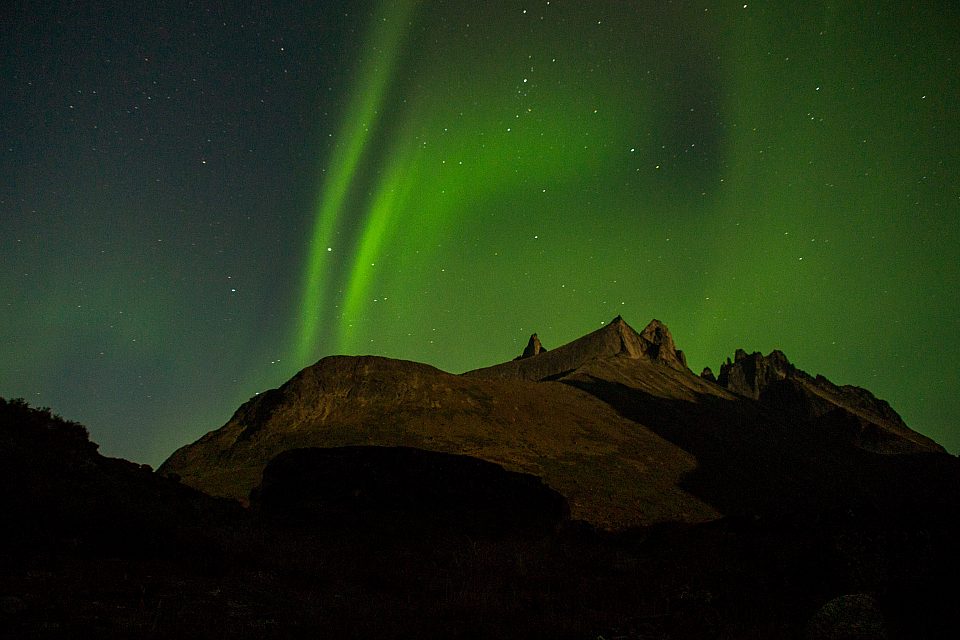

1 -
© Brent d'Hooge
2 -
© Brent d'Hooge
3 -
© Brent d'Hooge
4 -
© Brent d'Hooge
5 -
© Willem Vandoorne
6 -
© Brent d'Hooge
